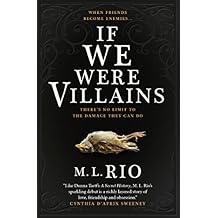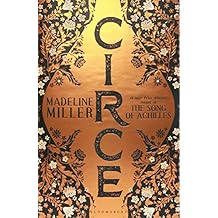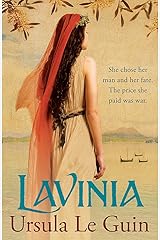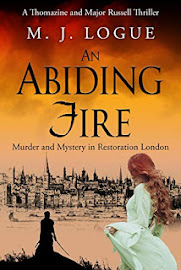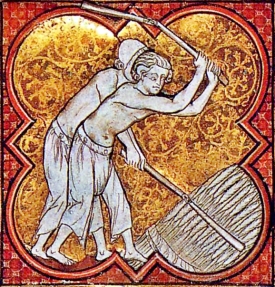 |
Twitter: #DDRevsBrowsingBlogs
interested in having your blog post listed?
Click HERE for submission details |
BROWSING THROUGH MARCH
LORD GEORGE MURRAY – ROLE IN THE ’45 (PART ONE) Julia Brannan
In July 1745 Prince Charles landed in Scotland, raised his standard at Glenfinnan in August, and headed south with his growing army. Lord George Murray, along with a lot of other men, joined the prince’s army at Perth, and became the Lieutenant-Commander of the Jacobite forces.
Read More:
https://juliabrannan.com/2019/03/18/lord-george-murray-role-in-the-45-part-one/
When History meet Hollywood by Sarah Gristwood on The History Girls Blog
"There’s been a bit of a boom in historical films recently - and I was lucky enough to get a preview of several at a film festival. Not, however, the one that’s attracted all the controversy: the new Mary Queen of Scots film which has been criticised so freely – it shows a meeting between Mary Stuart and Elizabeth Tudor which absolutely never happened. Though actually, every single drama about them has imagined that meeting, from Schiller back in 1800 to the old Vanessa Redgrave/Glenda Jackson movie. "
Read More>
http://the-history-girls.blogspot.com/2019/03/reserve-when-history-meet-hollywood-by.html
PREVIOUSLY
Slipcoat Cheese by M. J. Logue (from the English Historical Fiction Blog)
The time has come, the Ironside said, to talk of many things: of Banbury cheese, and slipcote cheese, and sometimes headless kings. Banbury cheese must wait another day, for my accomplish't delight on this occasion is slipcoat cheese.
Read More >
https://englishhistoryauthors.blogspot.com/2019/03/slipcoat-cheese.html
The "Lost" History of the Town of Swindon by Nicola Cornick (from the EHFA blog)
The town of Swindon in Wiltshire is not well-known for its pre-industrial era history. It rose to prominence in the early nineteenth century, first with the building of the Wiltshire and Berkshire Canal in 1810 and later when it became a centre for the repair and maintenance of locomotives on the Great Western Railway.
Read More>
April Munday: A Writer's Perspective
Medieval linen
"Over the past month, we’ve been looking at the manufacture of fabric for outer clothes in the Middle Ages: wool and silk. Now we’re taking a look at the fabric used for undergarments. These were not undergarments as we would think of them, but simple chemises or shirts, whose purpose was to keep the outer garments away from the skin. They kept the body’s oils and sweat from the expensive (and almost impossible to wash) wools and silks. It was the undergarments that would be washed, not the outer ones."
READ MORE
https://aprilmunday.wordpress.com/2019/03/03/medieval-linen/
Steam in the British Coalfields by Mick Pope - Amberley Blog
"Trainspotter, a description that has somehow become a term of ridicule, conjuring up an image of some bespectacled nerd who is unable to function in normal society and definitely won’t have any dress sense, wife or girlfriend. Funny how this has come about as an interest in railways in general as the second most popular hobby among men in the United Kingdom after angling. I did wear glasses as a young lad and so I was part way there already!"
READ MORE
https://www.amberley-books.com/blog/2019/03/steam-in-the-british-coalfields-by-mick-pope/
Sheila Williams
In 1590 at Skipton Castle in Yorkshire the Countess of Cumberland, Margaret Russell gave birth to a daughter, Anne. Her father was George Clifford one of England's heros; explorer, commander of ships during the Spanish Armada, favourite and champion of Queen Elizabeth I. However, whatever his public reputation, privately he was not much of a husband and father. George Clifford died in 1605 when his daughter was just fifteen. His final act of neglect was to disinherit his daughter of all the land, titles and possessions of the Clifford estates...
READ MORE > Link https://writeonthebeach.wordpress.com/2018/12/27/like-an-owl-of-the-desert-lady-anne-clifford/
Jude Knight The disease that made you in fashion
One of the biggest killers of humankind in history (apart from other humans) has been a tiny organism we now call Mycobacterium tuberculosis.
In ancient Greece, it was considered the most prevalent disease of the age. Throughout history, it has been feared and the symptoms treated with despair. And in the nineteenth century, it was a fashionable way to die.
J.G.Harlond - A Tribute to Daphne du Maurier
It is 80 years now since Daphne du Maurier’s novel Rebecca was first released. Back in 1938, du Maurier’s publishers were nervous about the novel’s future, but the story has become a classic: a world-wide favourite, a play, a television series, even an iconic black and white movie. For a while, back in the 90s, new editions of du Maurier’s novels were hard to obtain, but with the recent film version of My Cousin Rachel she is very much back in the public eye. Which is as it should be, because Daphne du Maurier was a very accomplished novelist.







